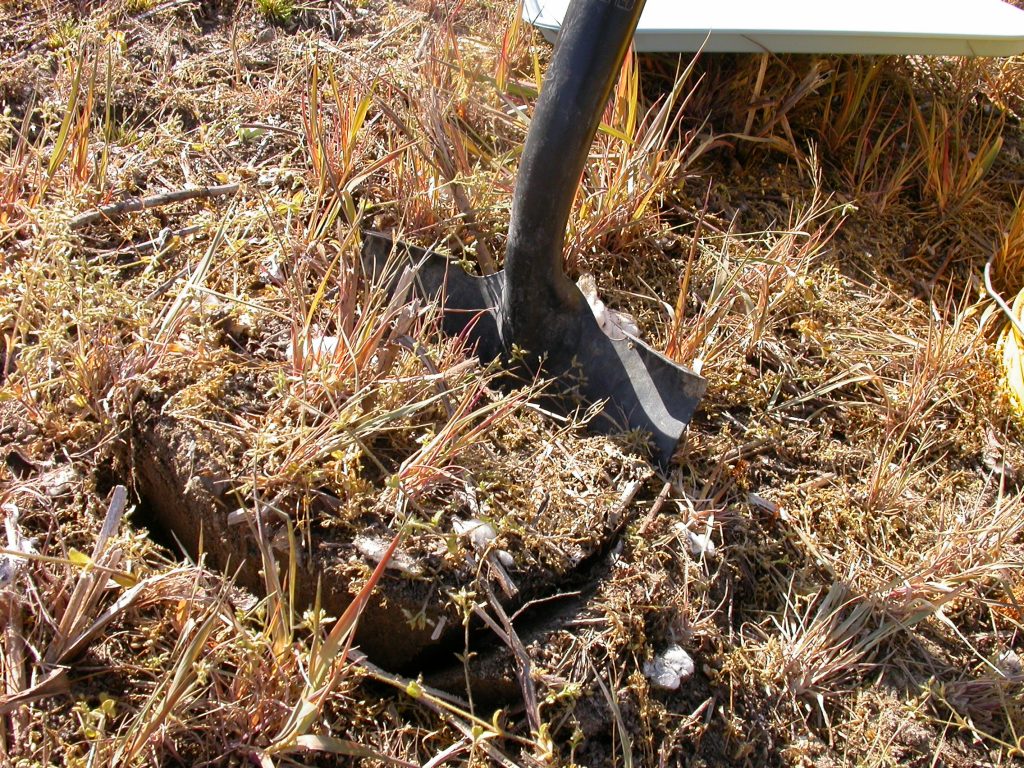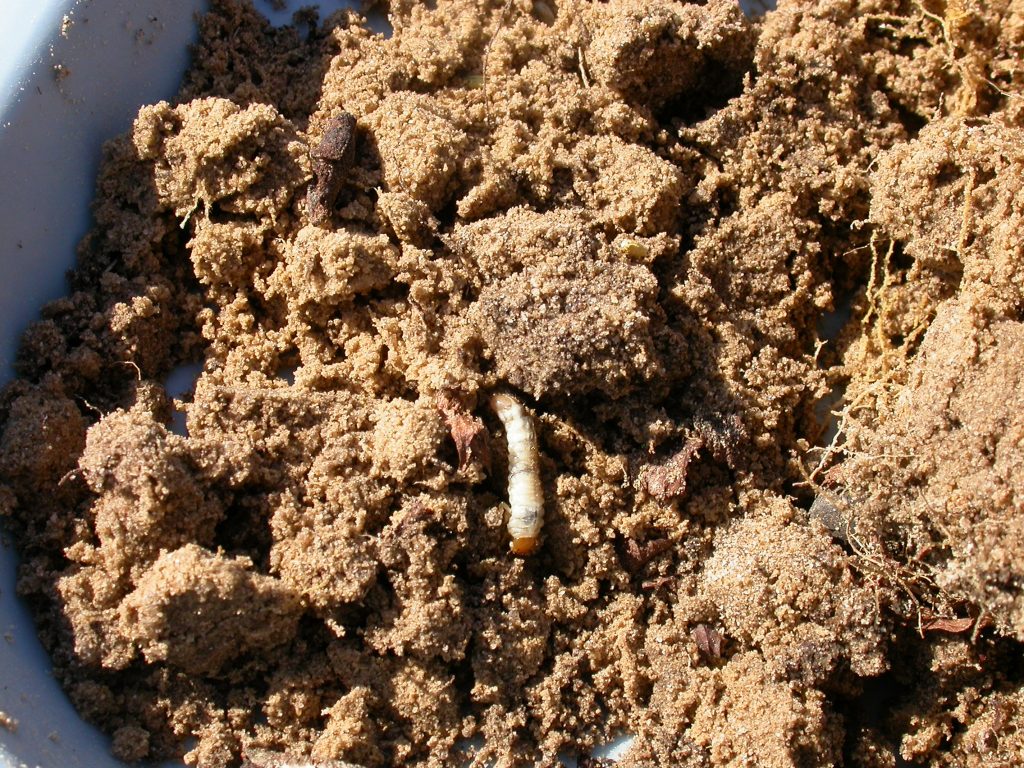Corn earworm (= bollworm) moth catches were exceptionally high this week, continuing to climb in Dinwiddie, Prince George, and Suffolk, VA black light traps. The average number captured per night was 38 in Greensville, 79 in North Dinwiddie, 72 in Prince George/Disputanta, and 124 in Suffolk. Thanks to Sara Rutherford, Scott Reiter, and the Tidewater AREC entomology crew for their reports. Here is the Table.
Category Archives: Cotton
Invitation to the Virginia Cotton Growers Association Annual Field Day on August 16, 2024
Location: Virginia Tech Tidewater AREC Research Farm (1045 Hare Road, Suffolk, VA). This event is free and open to the public. Registration begins at 7:30 am with tours starting at 8:00 am. Lunch will be provided, followed by a Peanut Agronomy Tour in the afternoon. Here is the Tour Program.
If you are a person with a disability and desire any assistive devices, services, or other accommodations to participate in this activity, please contact Matthew Chappell, Tidewater AREC Director at (757) 807-6537/TDD 800-828-1120 during business hours of 8:00 a.m. to 4:30 p.m. to discuss accommodations five days prior to the event.
Corn earworm/bollworm update for August 1, 2024
Corn earworm (= bollworm) moth catches increased greatly this week in southeastern Virginia black light traps. The average number captured per night was 50 in Greensville, 42 in North Dinwiddie, 39 in Prince George/Disputanta, and 67 in Suffolk. Thanks to Sara Rutherford, Scott Reiter, and the Tidewater AREC entomology crew for their reports. Here is the Table.
We have evaluated over 250 moths in our 2024 vial tests, with 57% surviving the 24-hour exposure to the pyrethroid insecticide, cypermethrin, at 5 micrograms per vial.
Corn earworm/bollworm moth update–July 25, 2024
Corn earworm (= bollworm) moth catches really started to increase this week in southeastern Virginia black light traps. The average number captured per night this week was 4 in Greensville, 11 in North Dinwiddie/Petersburg, 18 in Prince George/Disputanta, and 30 in Suffolk. Thanks to Sara Rutherford, Scott Reiter, and the Tidewater AREC entomology crew for their reports. Here is the Table
We have evaluated over 150 moths in our 2024 vial tests, with 61% surviving a 24-hour exposure to the pyrethroid insecticide, cypermethrin, at 5 micrograms per vial. Even though cypermethrin is no longer widely used, survival rates this high suggest we need to watch for some pyrethroid control failures, and to consider alternative chemistries when an insecticide is needed.
Asiatic garden beetle update–June 13, 2024
Black light trap catches of AGB per 3 to 4 nights in Sussex County, Virginia were 500 on June 7 and 487 on June 10, 2024. Producers have reported seeing adult AGB just by kicking over the top inch or so of soil in infested areas. I heard of 5 acres of cotton in Suffolk with very heavy AGB defoliation, but there are more reports where injury is not as severe. I look forward to learning when our AGB population will finally decline.
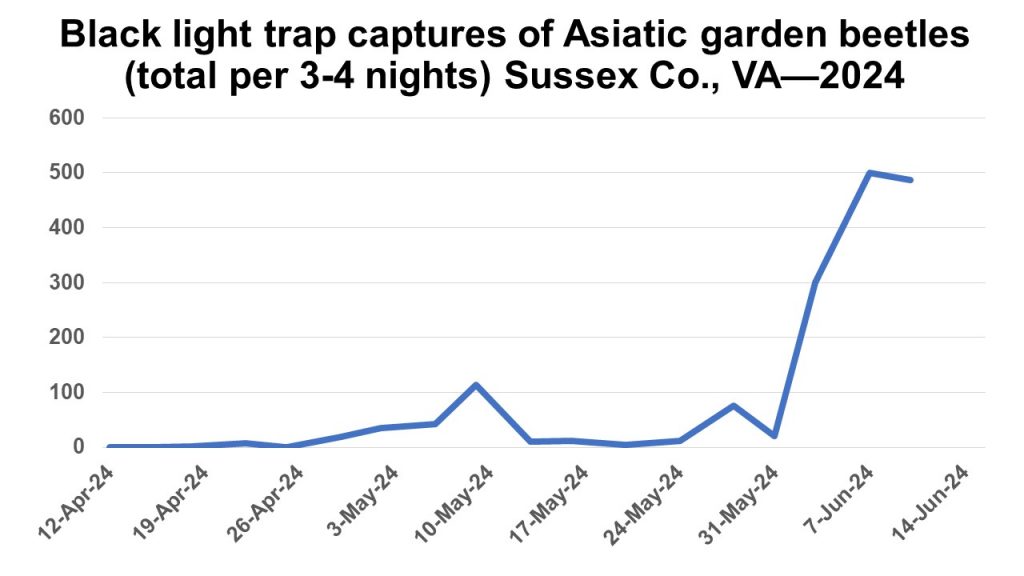
Asiatic garden beetle update–June 6, 2024
Captures of Asiatic garden beetle (AGB) in our black light trap climbed this past week, with 300 adults caught between May 31 and June 3, 2024. We do not know if we have reached peak emergence yet for this sporadic pest. Johnny Parker (Commonwealth Gin) reported three Virginia seedling cotton fields with AGB injury so far this season, with defoliated areas reaching 2 acres. Check for these insects under weeds such as pigweed, marestail, or volunteer soybean–focus especially on sandy soils. You may see round adult emergence holes in the ground. Or, a visit to the field at night (when adult AGB are active) may confirm the problem.
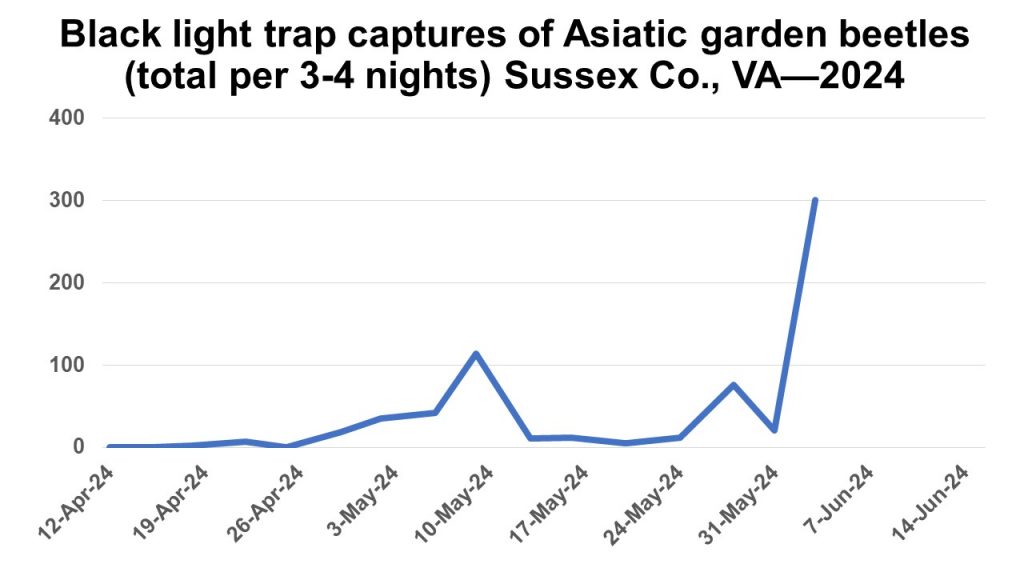
In a June 4, 2024 Pest Alert, Dr. Dominic Reisig and Dr. Guy Collins (North Carolina State University) provide AGB scouting and management information which is also applicable for Virginia cotton growers. Contact insecticides would need to be applied during peak emergence, and at night.
Asiatic garden beetle monitoring–May 23, 2024 update
In 2023 there were multiple, scattered reports of severe defoliation and/or death to cotton seedlings caused by Asiatic garden beetle (AGB) in Virginia and northeast North Carolina. Infested cotton areas varied in size, with some reaching 10 acres. AGB feed on roots (as grubs) and foliage (as adults) of many different host plants. The adults hide in the soil during the day and feed at night. AGB prefer sandy soil over heavier soil. When we visited the infested cotton fields, we often found AGB in the soil below weeds (e.g., marestail) and volunteer soybean plants.
This April the Tidewater Agricultural Research and Extension Center’s entomology program began sampling field “hotspots” from the 2023 season using soil samples, pitfall traps, and a black light trap. We found AGB grubs in soil samples from fields in Wakefield and Sussex County, VA, but did not find them in a northeast North Carolina field infested last year. AGB grubs can be differentiated from other white grubs by their “puffy cheeks.”
The black light trap is being operated in Sussex County, VA; it had a peak of 114 AGB adults (total per 3 nights) on May 9, 2024, followed by a sharp decline in captures. Other states have reported a single generation of AGB per season, but we plan to keep monitoring for several more weeks. We are still finding grubs and pupae in our soil samples. Pitfall traps placed in the field, designed to capture crawling adults (not flying due to cool temperatures), have not captured any AGB so far.
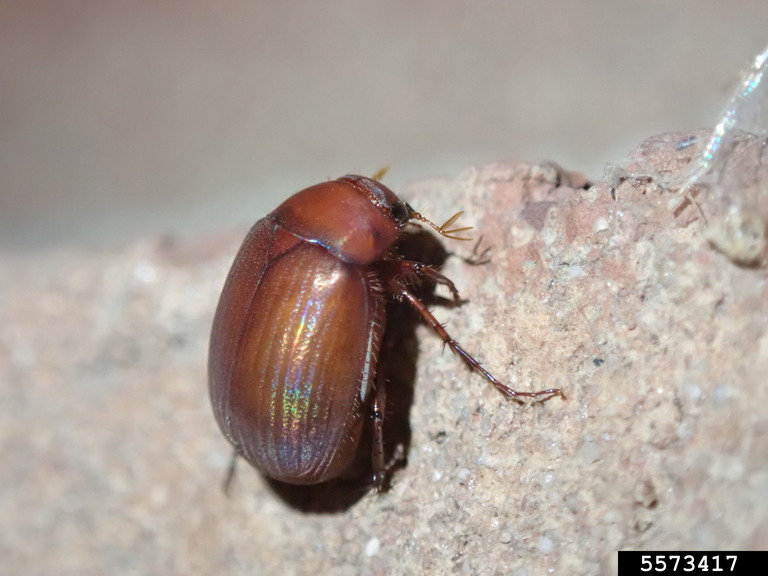
Cotton infestations and seedling injury from 2023 may have been due in part to cool May temperatures, keeping AGB adults on the ground, feeding in the cotton fields where they emerged; the cooler weather also limited cotton seedling growth.
We’ll provide further updates as we learn more. If you suspect an AGB problem in your seedling cotton, please feel free to reach out to me, or contact your county Extension Agent.
Acknowledgements: We are grateful for the financial support provided by Cotton Incorporated and the Virginia State Cotton Support Committee, and for the assistance provided by local cotton growers.
Integrated Weed Management Workshop
Spider mites in many crop fields
Observations from the field this week indicate that there are spider mite infestations at some level in most, if not all, peanut, cotton, and soybean fields in the drought-stressed Virginia regions. Drying of corn and weeds is contributing to this problem. Let’s all hope we get the rain we need to make a good crop this season. Rainy, humid weather will favor fugus that kills mites, but its effect may be mitigated by extremely hot conditions. Just in case, and since our last bad mite year was 2011, see below for a refresh about spider mites and how to treat them in each crop…
Soybean
Concentrate on the field borders and look for the early signs of white stippling at the bases of the leaves. Do not confuse mite damage with dry weather injury, mineral deficiencies, and herbicide injury. Mite infestations will have some pattern, usually originating from field margins. Consider applying a miticide if more than 50 percent of the plants show stippling, yellowing, or defoliation over more than one-third of the leaves. Recommended products include Zeal and Agri-mek (other abamectin products are available, but not labeled for soybean). Lorsban and dimethoate are labeled and may require a second application. Bifenthrin will offer some suppression, but mite infestations will come back stronger.
Peanut
Heavy infestations usually occur first around the borders of peanut fields; then they spread inward throughout the fields. Avoid harvesting spider mite infested cornfields or mowing weedy areas next to peanut fields until peanuts are harvested. Spider mites will readily move into peanuts when corn dries down or is harvested. Be prepared to treat peanuts if adjacent corn is infested. Use adequate pressure and GPA to ensure penetration of the canopy. Comite is our only registered product that works. See graph below from Dr. Mark Abney at UGA.
Cotton
Mite damage first appears as a slight yellowing of the leaves, which later changes to a purplish or bronze color and is usually associated with webbing. Damage occurs especially in spots or on field edges but widespread defoliation is not uncommon if favorable conditions persist. I recommend abamectin (10 oz/A rate is usually sufficient) or Zeal for control. Bifenthrin, other pyrethoids, and especially acephate, will flair mites. If you are treating for plant bugs, I recommend Transform at 2-2.25 oz/A until wetter conditions prevail. Be mindful of the bollworm flight next week and do not make automatic sprays for worms until you confirm a problem in your field. Worm specific products (Prevathon, Intrepid Edge, Blackhawk) are better options than broad-spectrum insecticides (pyrethroids).
Our annual post-bloom survey starts next week. If you need help learning how to scout insect pests, call or text me on my mobile (919) 801-5366.
Herbicide Resistant Weeds Workshops
CANCELLED! Due to Virginia Tech’s response to COVID-19 and out of concern for everyone, we are cancelling all of these workshops. We will reschedule after field season in Nov. or Dec.
Topics:
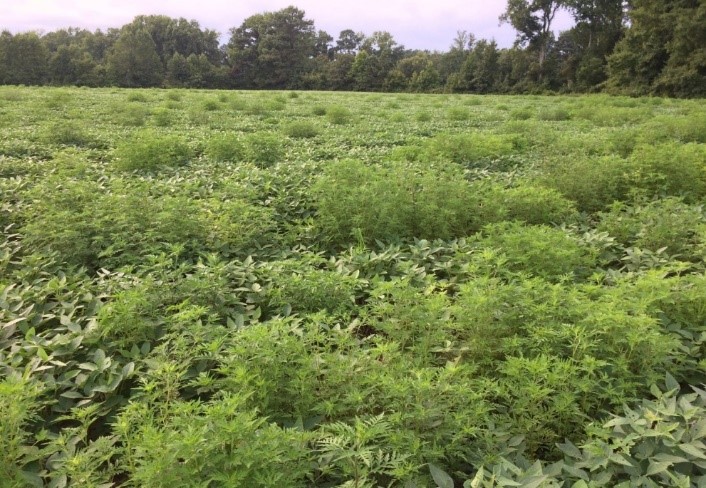
- Herbicide Resistance- What is it and how did we get here?
- Creating Effective Herbicide Plans
- Integrated Weed Management of Palmer amaranth, common ragweed, and horseweed/marestail
- Local Perspective on Weed Management
- Putting It All Together: Creating a Weed Management Plan
CCA credits will be offered
Free lunch to start or end the program!

If you are a person with a disability and desire any assistive devices, services or other accommodations to participate in this activity, please contact the Extension office listed above or TDD* during business hours of 8:00 a.m. and 5:00 p.m. to discuss accommodations 5 days prior to the event. *TDD number is (800) 828-1120.
Virginia Cooperative Extension programs and employment are open to all, regardless of age, color, disability, gender, gender identity, gender expression, national origin, political affiliation, race, religion, sexual orientation, genetic information, veteran status, or any other basis protected by law. An equal opportunity/affirmative action employer.


